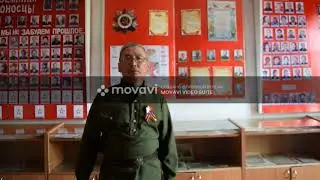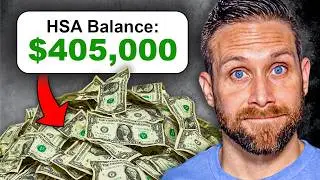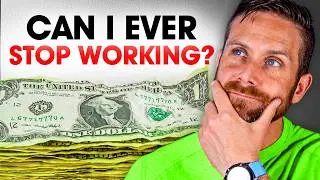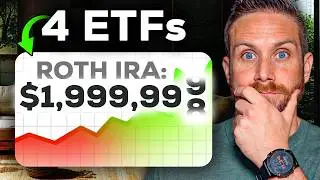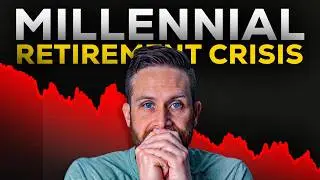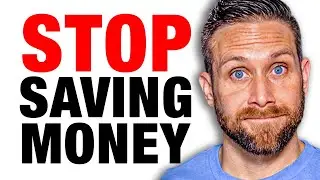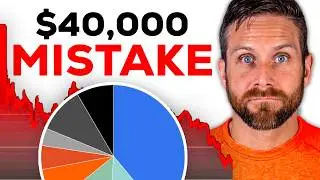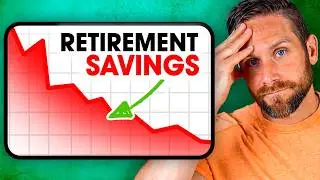How Much You Should Invest At Every Income (with data)
Personal Finance Bundle Wait List: https://bit.ly/4bpyTHT
Check out My Recommendations (It helps support the channel):
🔥 M1 FINANCE Investing- Free $10 (once you deposit at least $100 within 30 days) https://bit.ly/427KBBn
📚 Here's a video on how to use M1 Finance • M1 Finance Investing Tutorial For Beg...
📝 Boldin - The retirement planning tool I use to make sure I'm on track with saving for retirement. It's perfect for "Do it yourself" investors https://bit.ly/3EAAhrJ
🤑 Robinhood Investing- Free stock and 1% Roth IRA match when you open an account and deposit money https://bit.ly/3WpmIVg
📝 Empower - Free Net Worth Tracker https://bit.ly/3NUNtwq
📖 Free copy of my Spending Review Spreadsheet: https://bit.ly/48lMVZ1
💬 Sign up for 1 on 1 coaching with me: https://bit.ly/4bAUpYT
📧 Business Inquiries: [email protected]
Saving and investing are critical for reaching financial freedom, but there’s a point where increasing your savings rate no longer provides significant benefits. By analyzing different income levels and savings strategies, it becomes clear that the most efficient savings rate is around 35%. Beyond this level, each additional percentage saved shaves off only a small amount of time from reaching financial goals, making extreme frugality less effective than focusing on income growth.
Why savings rates matter
A strong savings rate is more important than high investment returns or a large income because it’s something that can be directly controlled. Cutting unnecessary expenses increases savings, but beyond a certain point, reducing spending further becomes difficult. Meanwhile, earning more money offers unlimited upside, allowing both higher savings and greater lifestyle flexibility.
The numbers behind savings rates
For someone earning $100,000 and aiming for a financial freedom target of $1.5 million, increasing their savings rate from 5% to 10% can shave off 10 years from their timeline. Raising it from 10% to 25% can reduce the time needed by over 20 years. However, after reaching 35%, the benefits begin to taper off, with each additional 5% in savings only cutting about one year from the timeline. This pattern holds true across all income levels, reinforcing that an extremely high savings rate isn’t necessarily the best strategy.
Why income growth matters more than extreme saving
Instead of aggressively cutting expenses beyond the 35% mark, focusing on increasing income is the better move. Since savings rates are percentages, earning more while maintaining the same savings percentage naturally increases both investments and spending flexibility, speeding up the path to financial freedom. Unlike expense-cutting, which has a hard limit, income has no ceiling, meaning raises, job changes, and side hustles can all accelerate wealth-building.
How to determine the ideal savings rate
A good starting point is 15–20%, which offers a strong balance between financial security and lifestyle enjoyment. From there, adjusting upward depends on personal goals and the trade-offs someone is willing to make. Using frameworks like the "regret minimization" test can help determine if increasing savings is worth the sacrifices. Periodically reassessing savings rates ensures they remain aligned with changing life circumstances.
When the 35% savings sweet spot changes
For those who already have a substantial investment portfolio, the ideal savings rate decreases because compounding does more of the heavy lifting. At around $75,000 invested, the savings rate sweet spot drops to 30%, and at $150,000 invested, it falls to 25%. This shift is why some people adopt Coast FIRE, where they save aggressively early and then allow their portfolio to grow on its own.
Ultimately, striking the right balance between saving, investing, and income growth is what creates financial freedom—not just obsessing over how much can be cut from expenses. Once a solid savings rate is in place, knowing how to invest effectively becomes the next crucial step.
Affiliate Disclaimer: Some of the above may be affiliate links. Support the channel by signing up or purchasing through those links at no additional cost to you. I appreciate you for helping me keep this channel running.
Disclaimer: This video is for entertainment purposes only. Everyone's situation is different so do your own research before making any decisions with your money.





